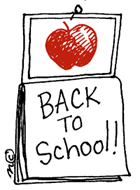Despite astonishing advances in medicine, gains in life expectancy are out of reach for millions of Americans simply because they lack the basic skills needed to manage their health in our overwhelmingly complex health care system.
Nearly half of the population has inadequate health literacy, putting them at a far higher risk of hospitalization, persistent poor health, and premature death. More than 90 million people cannot access, understand and use health information and services, yet low health literacy remains a largely hidden epidemic.
Together We Can Change This
Join Say Ah! as it leads the first ever community-based health literacy awareness campaign. Working closely with consumers, organizations, civic groups and the business community, Say Ah! will educate and empower residents with health literacy messaging and help integrate health literacy best practices into community programs. This two-year initiative will launch in early 2015 in Chelsea, New York.
Our vision is to create a health literacy hub, a living laboratory, where all the residents of Chelsea can learn when, where and how to get care. Understand their diagnosis and treatment options. Feel comfortable speaking up and advocating for themselves in the health care system. And make truly informed choices about their health.
This dynamic campaign starts with your support, ideas, and generosity. We welcome individuals, organizations and businesses interested in getting involved in this new initiative, whether they are based in Chelsea or beyond its borders.
About Say Ah!
Say Ah! — as in “Ah, I understand now” — is the only consumer-led organization dedicated to improving health literacy in the nation. Say Ah! educates and empowers patients and consumers through our health literacy workshops, curricula and materials. We partner with health and community service professionals to make health care easier to access, use and understand. And we advocate on behalf of the millions of Americans who struggle to understand their health. Say Ah! is a 501(c)(3) nonprofit organization.

